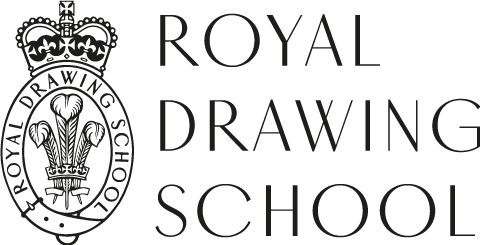Green Gardens: Venus’s Verdant Virtues - Rebekah Compton in Conversation with Claudia Tobin
This Summer Term, the Royal Drawing School continues its series of Creative Conversations; online dialogues between artists, curators and writers. Curated by Dr Claudia Tobin, lectures are held Wednesday evenings live on Zoom.
As an independent charity we rely on donations to keep our programmes accessible and open to everyone. If you would like to support our free online Lecture Series you can make a donation here
Venus is a goddess of nature, who resides in landscapes responsive to her powers over spring and regeneration. She thrives in gardens of aromatic myrtle and soft roses and rules over the peaceful seas and verdant shores of the Mediterranean. Artists commissioned to illustrate her landscapes were challenged, not only in rendering the atmospheric qualities of moisture and temperate weather characteristic of her haunts but also in portraying a green geography that would remain evergreen. Green pigments, in fact, posed many challenges to fifteenth-century Florentine artists. If not bound properly or if exposed to heat and moisture, these vivid powders could transmute into muddy browns and deep blacks. This conversation explores the nature of the green pigments and their origins in copper. It pays particular attention to Sandro Botticelli’s use of two greens, malachite and verdigris, in his Primavera, Venus and Mars, Venus and the Three Graces, and Birth of Venus. During the conversation, a demonstration that transforms these two copper-based pigments into paint allows viewers to see the difficulties that fifteenth-century artists faced when painting the green geography of Venus’s verdant landscapes.

Sandro Botticelli, Venus and Mars, ca. 1485, tempera and oil on poplar, 69.2 x 173.4 cm. National Gallery of Art, London. Photo: Fine Art Images / Alinari, Firenze.
Dr Rebekah Compton is Associate Professor of Renaissance and Baroque Art at the College of Charleston. She received her PhD in the History of Art from the University of California, Berkeley and completed a Mellon Postdoctoral Fellowship at Columbia University. She is currently a fellow at I Tatti, the Harvard University Center for Italian Renaissance Studies. Her research addresses the interplay between vision, materials, desire, and the body. She has written on Fra Filippo Lippi, Sandro Botticelli, and Michelangelo Buonarroti. Her book Venus and the Arts of Love in Renaissance Florence was published by Cambridge University Press in March of 2021.
Dr Claudia Tobin is a writer and curator. She held a Leverhulme Fellowship at University of Cambridge 2017-19 and is now a Senior Research Associate at Jesus College Cambridge and Visiting Fellow at UCL Institute of Advanced Studies. She recently co-curated Jerusalem in Exile: Artist’s Books by Kamal Boullata. She recently published Modernism and Still Life: Artists, Writers, Dancers (2020), and is co-editor of Ways of Drawing: Artists' Perspectives and Practices (Thames & Hudson, 2019).
